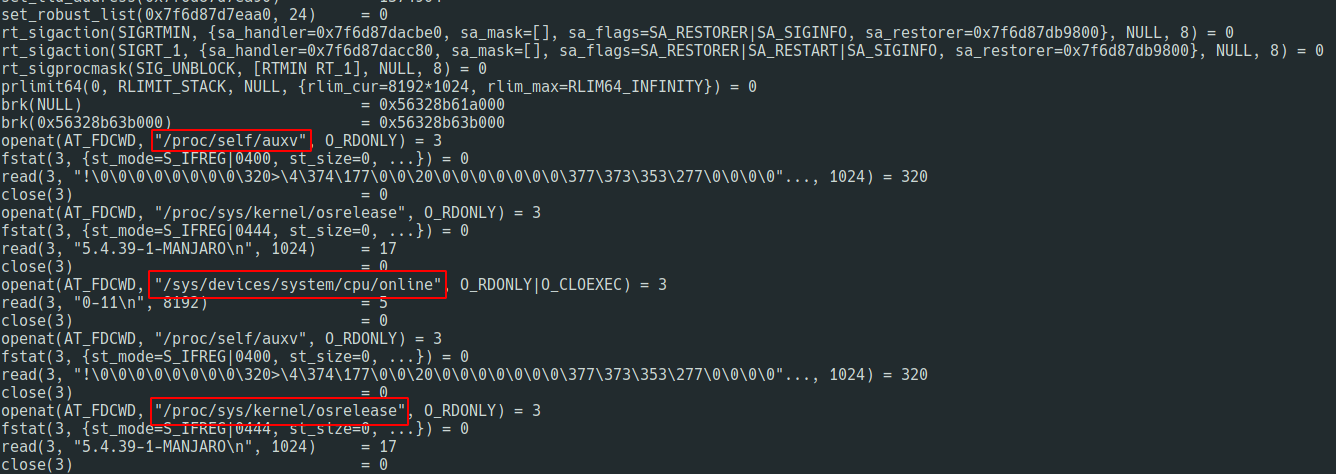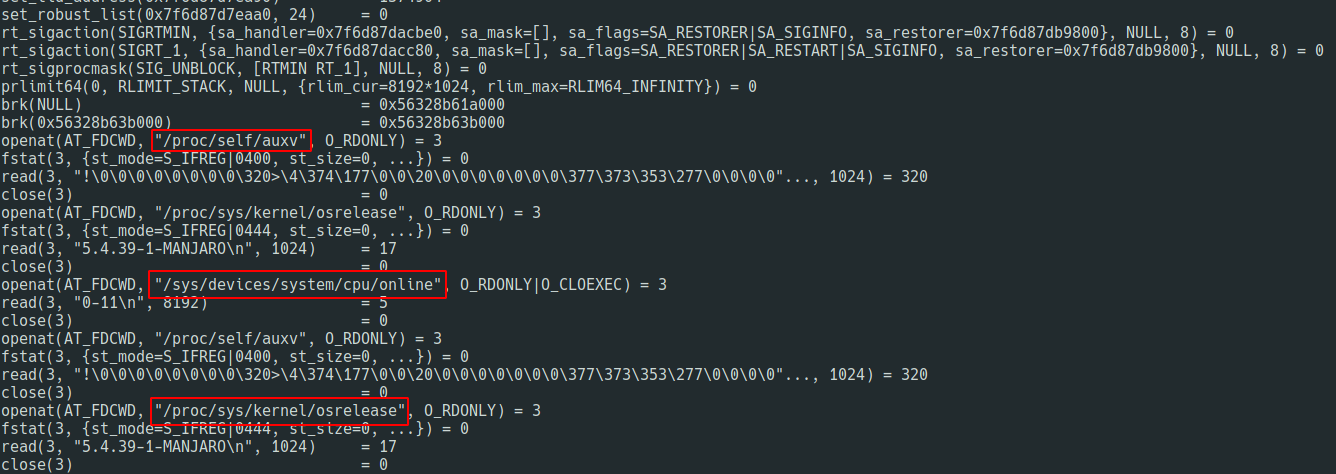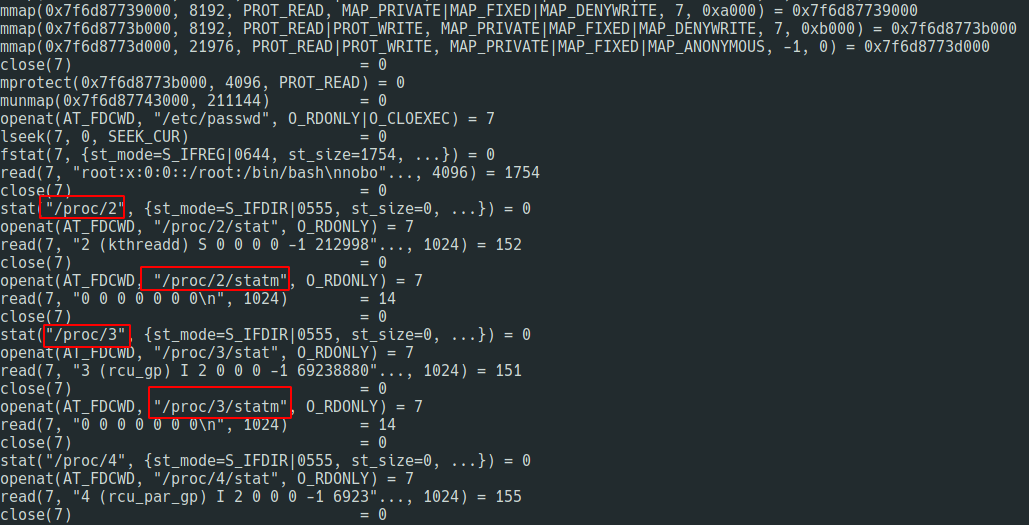[Study] top是如何实现的?
Linux中的top命令是如何实现的?
初探
top是procs的一部分, 常用来查看系统的负载情况. procs中除了top外, 还包括ps, free, w, uptime, watch, sysctl等常用的命令. 了解top命令除了直接在terminal使用之外, 就是top的官方文档和源代码了.
不过在此之前, 我们可以用strace top看下运行top命令时到底做了什么?
- 首先会读取一系列以依赖文件
![]()
- 然后会读取一些系统配置信息
![]()
- 最后就是从
/proc目录下读取进程的statm信息
![]()
/proc/xxx/statm
[cal@manjaro-nuc10i7fnh ~]$ cat /proc/self/statm 2126 130 114 6 0 112 0
2126 a)进程占用的总的内存
130 b)进程当前时刻占用的物理内存
114 c)同其它进程共享的内存
6 d)进程的代码段
0 e)共享库(从2.6版本起,这个值为0)
112 f)进程的堆栈
0 g)dirty pages(从2.6版本起,这个值为0)
- 关于/proc/xxx/stat的讲解可以参考这两篇博客:
Linux中 /proc/[pid] 目录各文件简析
/proc/stat解析
源代码实现
太久没碰过C语言了, 看着吃力. 先挖个坑, 先记个参考资料 https://blog.csdn.net/ubuntu2016/article/details/79439658
简单验证idle rate的计算逻辑
https://stackoverflow.com/questions/23367857/accurate-calculation-of-cpu-usage-given-in-percentage-in-linux
https://supportcenter.checkpoint.com/supportcenter/portal?eventSubmit_doGoviewsolutiondetails=&solutionid=sk65143
使用脚本读取并计算当前的cpu idle.
[cal@manjaro-nuc10i7fnh ~]$ cat calc_cpu_usage.sh
#!/bin/bash
while :; do
# Get the first line with aggregate of all CPUs
cpu_now=($(head -n1 /proc/stat))
# Get all columns but skip the first (which is the "cpu" string)
cpu_sum="${cpu_now[@]:1}"
# Replace the column seperator (space) with +
cpu_sum=$((${cpu_sum// /+}))
# Get the delta between two reads
cpu_delta=$((cpu_sum - cpu_last_sum))
# Get the idle time Delta
cpu_idle=$((cpu_now[4]- cpu_last[4]))
# Calc percentage
cpu_usage=$((100 * cpu_idle / cpu_delta))
# Keep this as last for our next read
cpu_last=("${cpu_now[@]}")
cpu_last_sum=$cpu_sum
echo "CPU idle rate at $cpu_usage%"
# Wait a second before the next read
sleep 1
done
对比CPU压力测试前后的idle, 可以确认top的计算方式和上面的脚本一致.
- 没有压力测试
![]()
stress --cpu 6
![]()
stress --cpu 12
![]()









 浙公网安备 33010602011771号
浙公网安备 33010602011771号